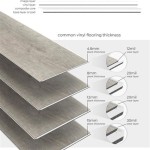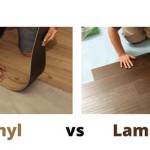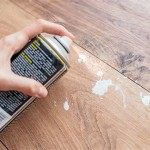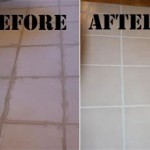Engineered Flooring Over Concrete: An Overview
Engineered flooring is an increasingly popular flooring option for homes and businesses alike. It offers the beauty and warmth of real wood, but is more durable and easier to maintain than solid wood flooring. Engineered flooring can be installed over various subfloors, including concrete. In this article, we'll explore the essential aspects of engineered flooring over concrete, including its benefits, installation process, and maintenance.
Benefits of Engineered Flooring Over Concrete
•
Durability:
Engineered flooring is constructed with a multi-layer design, making it more resistant to wear, scratches, and moisture than solid wood flooring. This makes it suitable for high-traffic areas and rooms prone to spills and accidents.•
Stability:
The multi-layer construction also enhances stability, reducing expansion and contraction caused by temperature and humidity fluctuations. This results in a floor that is less likely to buckle or gap.•
Water Resistance:
Some engineered flooring products are specifically designed with water-resistant properties, making them ideal for areas with moisture concerns, such as kitchens, bathrooms, and basements.•
Easy Maintenance:
Engineered flooring is generally low maintenance, requiring only occasional sweeping, vacuuming, and mopping with a recommended cleaning solution.Installation Process
Installing engineered flooring over concrete requires proper preparation and adherence to the manufacturer's instructions. The general process involves the following steps:
•
Concrete Preparation:
The concrete subfloor should be clean, level, and dry. Any cracks or unevenness must be repaired.•
Moisture Barrier:
A moisture barrier is installed over the concrete to prevent moisture from seeping up and damaging the flooring.•
Underlayment:
An underlayment is laid over the moisture barrier to provide cushioning, sound insulation, and additional stability.•
Flooring Installation:
The engineered flooring planks are installed using glue or a floating method. Glue-down installation involves adhering the planks directly to the underlayment, while floating installation involves interlocking the planks and allowing them to float over the underlayment.•
Trimming and Finishing:
Once the flooring is installed, it is trimmed around the edges and finished with moldings or baseboards to complete the look.Maintenance
To maintain the beauty and longevity of engineered flooring over concrete, regular care is essential:
•
Regular Cleaning:
Sweep or vacuum the floor regularly to remove dirt and debris. Use a recommended cleaning solution and mop the floor as needed.•
Avoid Harsh Chemicals:
Avoid using harsh chemicals or abrasive cleaners, as they can damage the finish of the flooring.•
Protect from Moisture:
Keep the floor dry and avoid prolonged exposure to moisture. Clean up spills promptly to prevent water damage.•
Maintain Humidity Levels:
Monitor the humidity levels in the room and use a humidifier or dehumidifier as necessary to keep the humidity within the recommended range for engineered flooring.By following these maintenance tips, you can ensure your engineered flooring over concrete remains in pristine condition for years to come.

Installing Wood Flooring Over Concrete Diy

Getting It Right Wood Flooring Over A Concrete Subfloor Page 2 Of 3 Construction Specifier

How To Install A Wood Subfloor Over Concrete Olde Ltd

Installing Engineered Flooring On A Concrete Slab Fine Homebuilding

Q A Solid Wood Floors Over Concrete Slabs Jlc

Hardwood Over Concrete Auten Wideplank Flooring

8 Awesome Wood Floor Over Concrete Gallery Solid Hardwood Floors Diy Installation

Installing Engineered Hardwood On Concrete Twenty Oak

How To Install A Barn Board Floor Over Concrete Tutorial Diy Passion

Installing Hardwood Floors Over Radiant Slabs Fine Homebuilding
See Also







